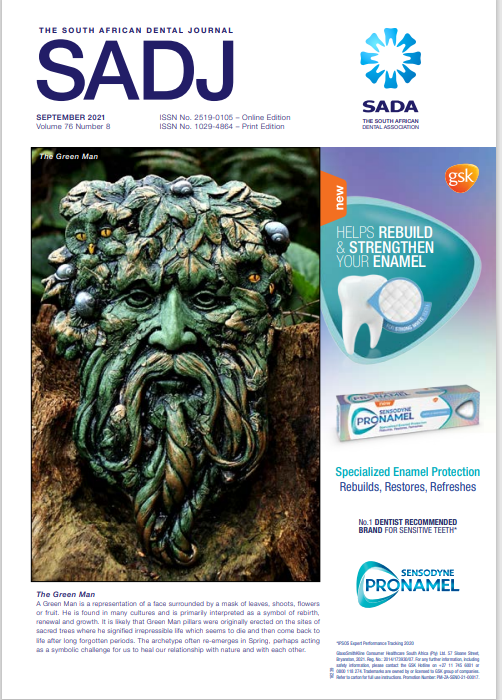Maxillofacial Radiology 193- Bridging analogue and digital imaging in occlusal radiography
Keywords:
Salivary gland stones, termed sialolithsAbstract
When radiopacities are detected in the mandible it is imperative to establish whether they are centrally (within or attached to the
bone) or peripherally (in the soft tissues) located. The establishment of locality aids in the development a differential diagnosis. Two low-dose intraoral methods can be used in this regard, namely the buccal object-rule and mandibular occlusal radiographs. In the
golden age of film and the more modern photostimulable phosphor plates, the process of acquiring an occlusal radiograph is typically
straightforward. However, this process is difficult with the more commonly used charged coupled device (CCD) or complementary metal-oxide semiconductor (CMOS) digital sensors. An alternative method may be used to secure the sensor with two dental disposable cotton rolls at the top and bottom, held in place with an elastic band.
Downloads
References
Baurmash HD. Submandibular Salivary Stones: Current Management Modalities. J Oral Maxillofac Surg. 2004;62(3):369-378. doi:10.1016 /j.joms.2003.05.011
Ribeiro A, Keat R, Khalid S, et al. Prevalence of calcifications in soft tissues visible on a dental pantomogram: A retrospective analysis. J Stomatol Oral Maxillofac Surg. 2018;119(5):369-374. doi:10.1016/j.jormas.2018.04.014
Downloads
Published
Issue
Section
License

This work is licensed under a Creative Commons Attribution-NonCommercial 4.0 International License.





.png)